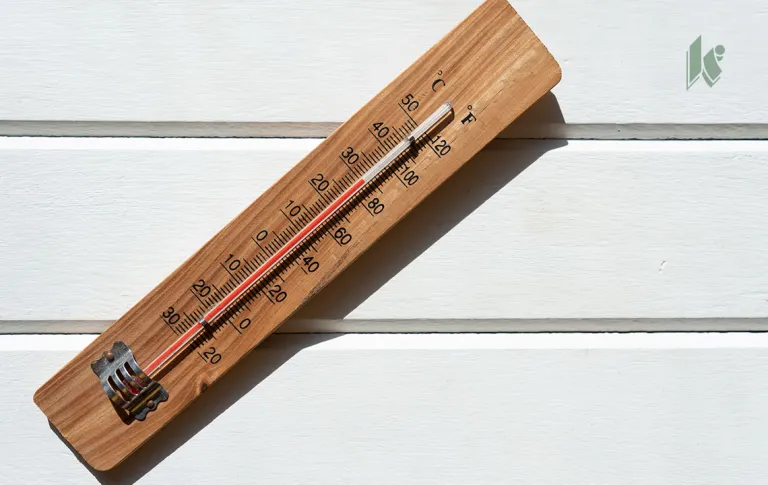
The summer of 2025 is predicted to be a hot one! The heat dome that we experienced at the end of June has only strengthened this prediction.
Hot weather presents the risk for several heat-related illnesses: heat cramps, heat exhaustion, and heatstroke. These illnesses can be increasingly dangerous for older adults. Unfortunately, older adults are also more likely to have increased risk factors to suffer heat-related illnesses.
In this guide, we’ll go over three heat-related illnesses, as well as tips for avoiding them and ways to stay cool.
Heat-Related Illnesses
Heat-related illnesses can be traced back to one thing: our body’s internal temperature. Our bodies work to maintain a consistent internal temperature to function well. (The Mayo Clinic says the typical body temperature can range between 97°F and 99°F, although there can be variation due to many factors.) When our internal temperature is hotter than usual, our bodies sweat to cool off.
However, in some cases, our bodies are unable to cool down enough. It may be too humid for our sweat to evaporate, or the strenuous activity or workout we’re doing is outpacing our body’s abilities to cool off. Sometimes, the weather outside is just so hot that the heat alone poses a huge danger.
Older adults have additional risk factors that make them more vulnerable to heat-related illnesses. In general, our central nervous system becomes less responsive as we age. This affects our body’s ability to adjust to temperature changes because it takes longer to respond and cool down effectively. Additionally, older adults are more likely to have chronic health conditions or take medications, both of which can affect body temperature and the body’s ways to regulate it.
There are three main heat-related illnesses:
Heat cramps are painful muscle spasms that happen while performing activities in hot environments. They’re caused by the lack of fluids and electrolytes in the body; people typically lose them when sweating. Heat cramps are the mildest of the heat-related illnesses and can be treated with rest and liquids. (Sports drinks with electrolytes are the drink of choice in these cases, although cool water and some juices can do just as well.)
Heat exhaustion is a set of symptoms caused by the body overheating. Unlike heat cramps, heat exhaustion affects all parts of the body and therefore has a larger variety of symptoms. The best treatment is to immediately stop all activity, move to a cooler location, and drink liquids. If symptoms get worse or fail to improve within an hour, seek medical help.
Symptoms include:
- Heavy sweating
- Weak, rapid pulse
- Faintness, dizziness, and/or fatigue
- Nausea
- Muscle cramps
- Headaches
- Low blood pressure when standing up
- When in a hot environment, the person’s skin is cool, moist, and/or has goosebumps (the opposite of typical body reactions to heat)
Heatstroke is the most severe of the heat-related illnesses. It shares the same causes as heat exhaustion, and some of the symptoms are similar (albeit more severe). Heatstroke requires emergency medical treatment. Untreated heatstroke can otherwise lead to permanent organ damage, serious complications, and even death. If someone is suffering from heatstroke, call emergency services and cool the person as best you can while you wait for help.
Symptoms include:
- High body temperature
- Racing heart rate
- Change in mental state or behavior
- Change in sweating pattern (heatstroke caused by a hot environment can make the skin very dry; heatstroke caused by activity can cause profuse sweating)
- Nausea and/or vomiting
- Flushed skin
- Rapid breathing
- Headache
Preventing Heat-Related Illnesses
The best thing you can do is to avoid getting any of the heat-related illnesses in the first place. Luckily, the best ways to do that will also help you beat the summer heat.
- Stay in cool areas as much as possible. Indoor areas with air conditioning are top tier, but areas out of direct sunlight are also good options.
- Don’t do strenuous activities during hot weather. Raising your body temperature when the environment can’t help you cool down can lead to serious consequences.
- Hydrate! During very hot weather, it’s important to hydrate even when you don’t feel thirsty. This will help you keep cool and replenish the liquids you lose from sweating. Cool water and sports drinks with electrolytes are top drink choices. Avoid drinks with caffeine, alcohol, or high levels of sugar and sodium.
- Wear loose, lightweight, light-colored clothing. And if you need to go outside, wear a hat. (And sunscreen!)
- Take it easy during the hottest parts of the day. Even when you’re indoors, heat-related illnesses can come on suddenly if you’re not careful. Take precautions.
- Listen to your body. Your body will give you signs if it is feeling hot. When you notice these signs, find ways to cool down.
A Relaxing Summer at Kingsway
Making sure that you and your living space are ready for a hot summer can feel overwhelming. Kingsway’s Independent Living apartments can take away some of that stress. Our apartments provide maintenance-free living, so you don’t have to keep checking to make sure that the A/C is running. Instead, you can focus on enjoying the summer how you want to (or join us with our on-site events). Reach out today to learn more or schedule a tour of our facilities.
Information for this guide comes from the Mayo Clinic and the US Centers for Disease Control and Prevention.